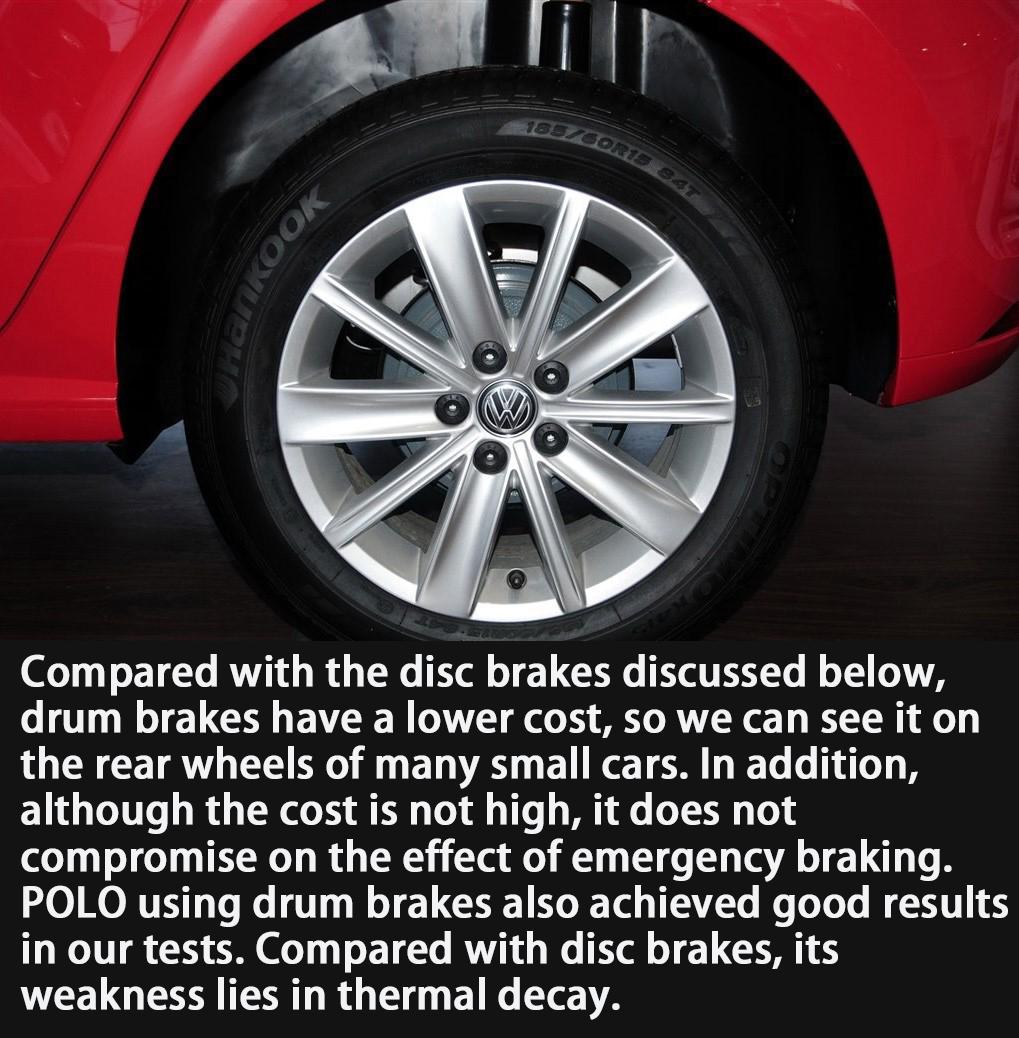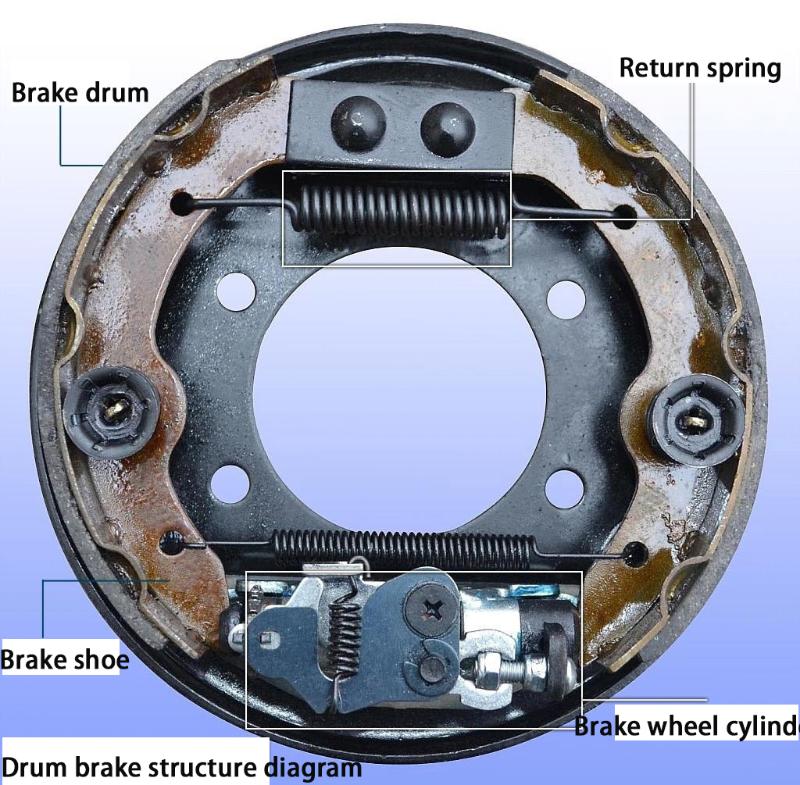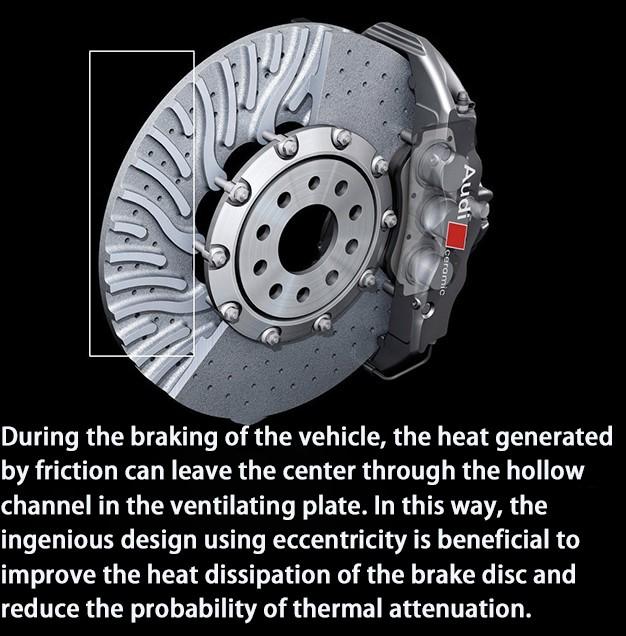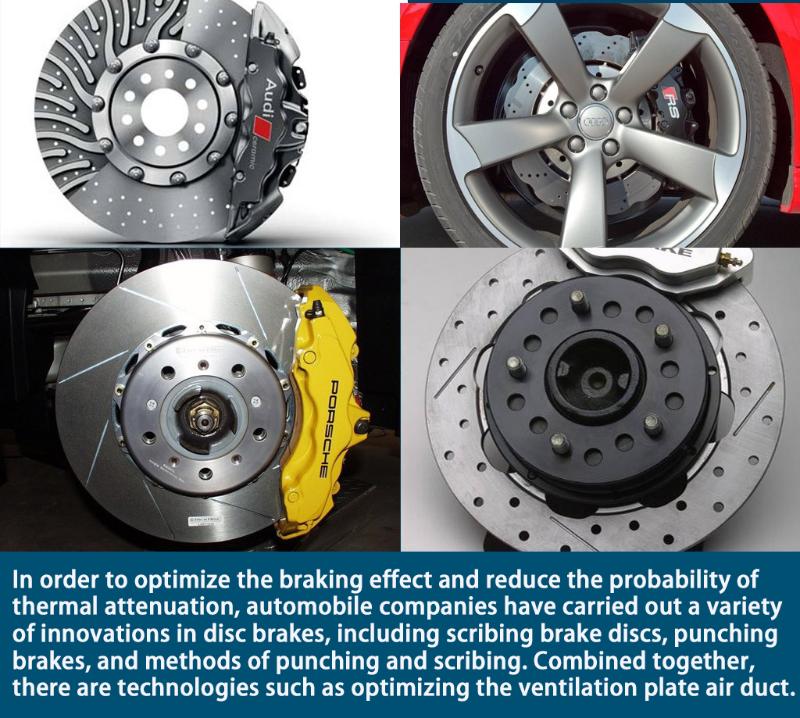[WapCar] At present, the types of front wheel brakes include disc, ventilated disc, perforated ventilated disc, carbon fiber ceramic ventilated disc, etc. For most models, the first two types of brake discs are commonly used, and the latter two are common in performance cars.
Drum
As one of the two most common brakes, drum brakes have a long history. This design was applied to some carriages in 1902, and after the 1920s, cars that were still a new thing began to be applied.

Drum brakes are usually composed of brake drums, brake shoes, and brake wheel cylinders that drive the brake shoes. The brake drum rotates with the wheel, and the brake shoe inside it moves under the push of the brake wheel cylinder and squeezes the inner surface of the brake drum. The torque generated by friction prevents the wheel from rotating to achieve the purpose of braking.

It can be found from the above structural diagram that the drum brake shape is relatively closed. Therefore, after continuous and high-intensity braking, the internal heat accumulation is more obvious, and the heat attenuation phenomenon is more obvious than the disc brake described later. In addition, after a certain mileage in the later period, the need to deal with the brake powder produced by the friction of the brake shoe is also a disadvantage. When the brake drum is immersed in water, the effect of drum braking efficiency is also more obvious than that of the disc brake discussed below.
Disc
Unlike a drum brake, the rotating element of a disc brake is a brake disc, and the friction against it becomes a brake caliper. When the vehicle needs to brake, the brake caliper is pushed by hydraulic pressure, and the friction material (brake pad) on it clamps the rotating brake disc. This process is very similar to the braking process of our bicycle.

When the vehicle is braking, because the center of gravity moves forward, the load on the front wheel braking system is relatively large. At present, more and more vehicles choose brake discs for the front wheel brake system. After using disc brakes on the front wheels, the thermal attenuation is relatively low, which also helps to improve the braking stability of the entire vehicle.

Ventilated Disc
With the development of technology, ventilated brake discs began to walk around us. As the name implies, its interior is hollow, and its counterpart is a solid disk. The cold air of the ventilating pan can pass through the middle to cool down. From the outside, it has many holes in the circumference leading to the center of the circle. The centrifugal force generated during the driving of the car can make the air convection, so as to achieve the purpose of heat dissipation. Therefore, it has a better heat dissipation effect than ordinary solid disc brakes, and the heat attenuation phenomenon is relatively weaker.

Perforated Ventilated Disc
Since it is possible to "ventilate" the brake disc, smart engineers must further think of a good way to cool the brake disc, and the perforated ventilation disc came into being. It perforates the disk surface on the basis of the ventilated disk to ensure air circulation to the greatest extent and reduce heat attenuation.



Of course, perforating, marking, and changing from a solid disk to a hollow disk on the brake disk all require a lot of industrial design, calculations and experiments. In the absence of the above technical support, the original intention of the car owner to drill and mark the brake disc to improve the heat dissipation capacity of the brake disc will often result in damage to the brake disc structure and weakened strength.
Carbon Fiber Ceramic Ventilation Disc
For those supercars who are only fast but not broken, the excess weight on their bodies still makes them sleepless at night. Like many technologies mentioned before, carbon fiber ceramic brake discs are also a kind of technology decentralization. It can be traced back to the 1970s, when it was first used in aerospace brake systems. After entering the 1980s, motorsports began to be used. Since then, supercars led by Ferrari ENZO have also begun to match.

However, although there is ceramic in the name, it is by no means the ceramic we see everyday. It is made of high-performance materials that are specially mixed with powder, resin and fiber through a complex manufacturing process. The weight of carbon fiber ceramic discs is less than half that of ordinary cast iron discs. For example, the SLR MCIAREB with ceramic brakes has a front wheel brake disc diameter of 370mm but weighs only 6.4 kg.
The CL-CLASS, which uses ordinary brake discs, has a front disc diameter of 360mm but weighs up to 15.4 kg. In addition to the advantages of reducing weight, carbon fiber ceramic brake discs have better thermal attenuation resistance, which can better help them to "stand up" faster in terms of acceleration and extreme speed.


As mentioned earlier, carbon fiber ceramic brake discs are not perfect. The high price is one of the reasons that hinder their popularity. On the other hand, before the carbon fiber ceramic brake disc reaches the operating temperature, that is, when the temperature is low, its braking effect is not ideal, and sometimes it will produce a slight abnormal noise.